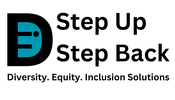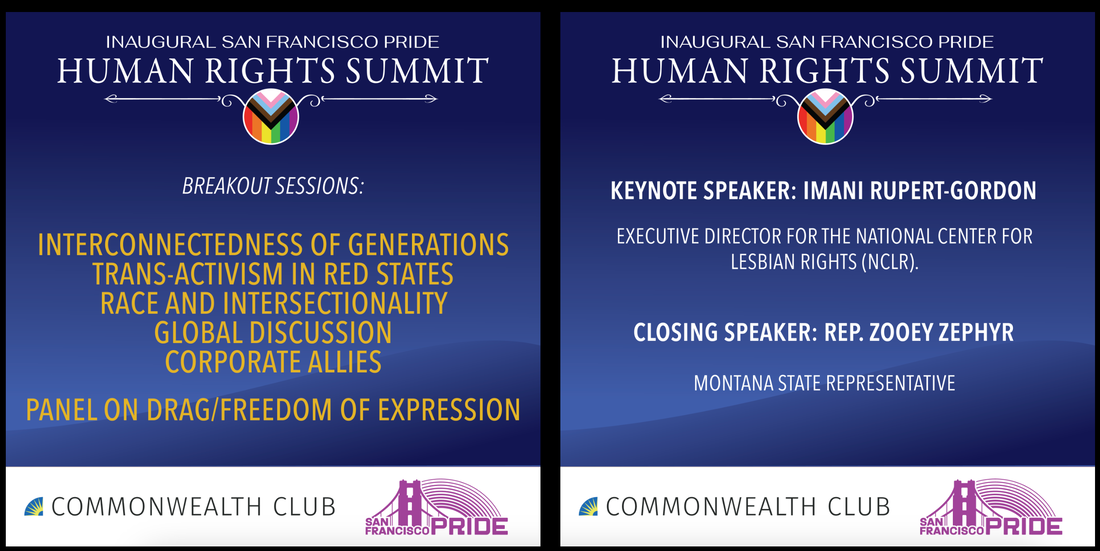|
It’s that time of the year when pumpkin spice and conferences can be enjoyed all across the nation. As an avid conference attendee and presenter for several years, I offer my DEI insight in this article on how to make conferences more inclusive based on my conference attendance for 2023. In an effort to be clear in this article, when I say conference I am also referring to national summits I have attended and those I am currently registered to attend. Despite conferences taking the first steps to enact DEI they continue to perpetuate discriminatory practices and beliefs through vague language, inconsistent standards, and disconnect of actions. Read on to learn five ways to make your conference more inclusive. 1. Inclusive LanguageUse language that invites multiple identities to participate and prevent exclusive language choices driven by bias. Inclusive Language Example 1 Behavior: Interviewers at the Forbes Women’s Power Summit (FWPS) regularly referred to the predominantly female audience as “guys” in phrases such as “You guys are really going to enjoy this next speaker.” Impact: Using exclusive terminology like “guys” creates a standard that promotes men or “guys” as the acceptable default when addressing the dominant majority in the room. This word choice prioritizes men over women and other non-binary genders because it erases the presence of any individual who does not conform to the identity as a man. This especially contradicts the summit with the word women in the Forbes Women’s Power Summit in the title who seeks to reach a target demographic of self-identifying women professionals. Inclusive Language Example 2 Behavior At the FWPS, Period Company co-founder/CEO Karla Welch consistently used the inclusive phrase “people who have periods” rather than “women.” Impact: Welch’s word choice acknowledges and increases awareness that not all people who have periods identify as women. There are individuals who do not identify as women and experience menstruation such as some trans men or gender non-binary individuals. This inclusive wording also reinforces a spectrum of woman identities who recognize that a period is not a determining factor to qualify a woman. There are numerous individuals who identify as women and do not have periods such as trans women, post menopausal women, and folks with medical conditions (ovarian cancer, oral birth contraceptives, hormone imbalance, etc.) that do not permit them to menstruate. 2. Theme AlignmentCreate a theme supporting relevant organizational mission and consistency standard, instead of reproducing irrelevant practices and confusing mixed messages. Theme Alignment Example 1 Behavior: Pride Summit Lesbians Who Tech (PSLWT) 2023 theme "Queer, Inclusive, Bad Ass." Impact: Sets the tone with clear principles/values that reflect the conference’s vision with relevant offerings for lesbians in the tech industry, in addition the theme effectively invites allies to participate and act indicated by the specific word choice of “inclusion.” Theme Alignment Example 2 Behavior: SF Pride Human Rights Summit (HRS) did not have a theme. Impact: Missed opportunity to clearly communicate a unified forward direction of the summit, memorable branding, and cross promote San Francisco's Pride parade’s theme Looking Back and Moving Forward. Lack of a specific theme encompassed a collective of loosely related LGBTQIA+ activists and allies with a large variation in messaging from drastically different experiences: Planned Parenthood, Alaska Airlines, ACLU, JCC, TransClinique. etc. Theme Alignment Example 3 Behavior: Forbes Women's Power Summit theme "Power Rising." Impact: Concise inspiration in two words embodied a standard of consistency for the summit’s offerings and intended takeaways for attendees. Moira Forbes consistently interviewed speakers asking “What makes you powerful?” to support the summit theme and explicitly address the barriers professional women face. Not all interviewers and speakers addressed power as explicitly, but with clear theme branding attendees were able to draw connections between power and its influence on successful diverse careers of women. 3. Representation MattersVet diverse speakers who exemplify conference’s future vision/culture, instead of representing the same identities and out of date thinking. Representation Matters Example 1 Behavior: PSLWT featured marketing depicting an urban aesthetic with hip hop music as the background for Black, Brown, and White speakers/attendees
The marketing and speaker selection represented an emphasis on Black and Brown racial diversity and White lesbian women. The speakers predominantly depicted both queer White and Black presenting women in positions of leadership in tech with extremely limited representation of Asians who represent a significant demographic of the professional tech industry. Large scale, the limited representation of Brown techies as speakers erased other PGMs such as East Asians and South Asians who may not self-identify as Brown due to dominant culture perceptions. Representation Matters Example 2 Behavior: 2023 Inclusion Conference hosted by Society for Human Resource Management (SHRM) main stage’s speakers featured on the website include the following presented identities: two Black cis women, one AAPI cis woman, and one White cis man. Impact: SHRM’s speaker selection exclusively depicts racial diversity as the professional standard to achieve inclusion and diversity in the professional corporate world. This superficial DEI quota dismisses other marginalized identities such as diversabilities, non-Christians, gender non-binary, etc. and effectively erases intersectional identities. It sets a culture of over simplification and inaccurate representation of inclusion. This practice effectively pushes vulnerable populations even further towards the peripheries of organizational scope in the professional realm of HR and People Teams. As intersectional vulnerable populations they are especially in need of representation and support. 4. Proactive AccessibilityDesignate accommodation personnel and resources to assist vulnerable populations e.g. diversabilities (people with disabilities), neurodivergence, low income, etc. Proactive Accessibility Example 1 Behavior: PSLWT comprehensive virtual platform including
Robust accommodation resources and staff designated to prior, during, and post conference for attendees exemplifies allyship and inclusion. By walking the talk of accessibility accommodations PSLWT reinforced a truly inclusive professional development culture and environment that sets exemplary behavior and practices by offering numerous options to expand conference accessibility of content and staff. Proactive Accessibility Example 2 Behavior: FWPS and HRS were limited to livestream only. Impact: The lack of chat and networking options excluded virtual attendees from discussing deeper topics presented and connecting with other attendees in the pursuit of making change for the greater good. This excluded experiential learners from engaging with conference content and stifled potentially meaningful interactions between speakers and attendees for Q&A. The absence of designated staff and additional accessibility options communicated a prioritization of in person attendees and treated virtual attendees as an afterthought rather than valued conference attendees. 5. Call ReinforcementsConsult with material specialists and DEI consultants who are up to date on inclusive practices in the rapidly changing professional development industry. Call Reinforcements Example 1 Behavior: HRS invited material specialists from a spectrum of LGBTQIA+ activism and experience backgrounds ranging from boots on the ground front line experience to high level executive and political leadership positions. Impact: As a non-profit organization SF Pride is deeply rooted in community based activism and change making, this results in creative partnerships spanning generations of experience and encompassing an immense sea of talent to draw from. SF Pride excels in fostering mutually beneficial partnerships. Partner organizations gain national and international publicity as LGBTQIA+ supporters and increase awareness of organizational offerings, simultaneously SF Pride gains increased access to necessary resources to host a large-scale event directly benefiting a minority community with dominant culture buy-in. Ultimately, ROI is high for all parties involved rather than a one way parasitic relationship. ClosingTruly inclusive conferences can not be achieved by one person alone. Share this blog with anyone who would benefit from it. Use this list as an informal audit or conversation starter to critically analyze what inclusion means to you and the conferences you host or attend. Change starts when there exists a need to address discomfort. When more than one individual adopts a new behavior that impacts their relationship or environment, the change making process has begun. Once the momentum is gained and the majority adopts the new behavior that is when we have achieved inclusion. Contact us to dive deeper into additional ways to be inclusive with inclusion analysis, strategic planning, and implementation. Comment on this post if something resonated or ask us a question about this blog. We would love to hear from you!
1 Comment
Seneca
9/30/2023 02:22:55 pm
Excellent tips and clearly laid out advice for making any conference or gathering more inclusive! A little bit of preparation beforehand goes a long way to making everyone feel included!
Reply
Leave a Reply. |
Learn & ExploreBlog posts to expand your leadership knowledge and increase your exposure to DEI Archives
June 2024
Categories |
Proudly powered by Weebly










 RSS Feed
RSS Feed